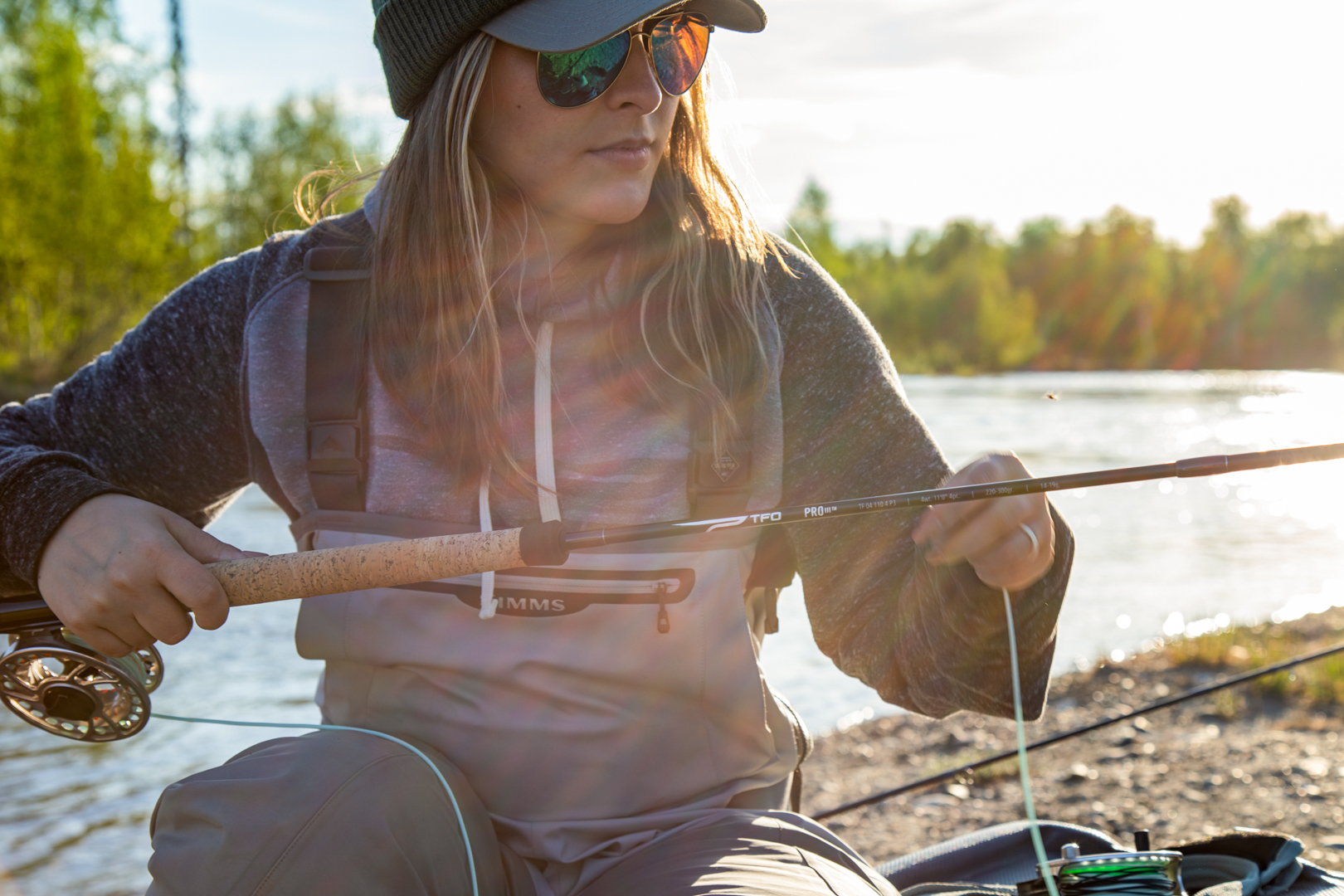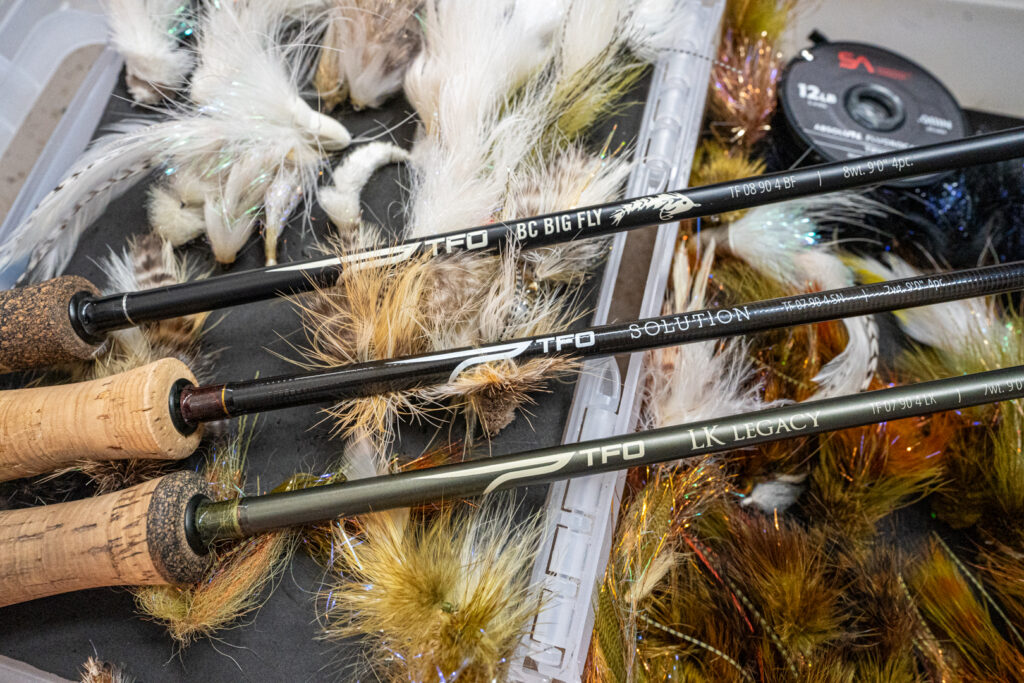Confused by the multitude of two-handed or spey lines on the market? Don’t know what line you need for your TFO rod? We totally get it.
As manufacturing processes continue to advance, and the divide between line designers and rod designers grows, it is becoming more and more difficult to find the right two-handed line for your rod.
When trying to find the right line for your two-handed fly rod, a few things must be taken into consideration.
Before getting too deep into lines, heads, and grains, it is important to mention the physical makeup of spey lines and which lines are appropriate for your fishing situation.

The all new Pro III Two Handed Series, 2022 EFTTEX Digital Best New Product Showcase Runner Up for Best Two Handed Fly Rod paired with the BVK SD reel. // Photo: Kory Robbins
Skagit Heads
Some of the most popular lines used on Spey rods today are skagit style heads. Skagit heads tend to be thicker, with a short often indiscernible front taper. They offer more water resistance to get a better load on the two-handed fly rod with the sustained anchor style of Skagit casting. These lines are shorter, typically two-and-a-half times the length of the rod, (and now with the increasingly popular micro-skagit heads).
They are ideal for throwing heavy flies, heavy sink-tips, and fishing deep, fast-moving water.

Skagit fly lines are ideal for throwing heavy flies, heavy sink-tips, and fishing deep, fast-moving water with two-handed fly rods. // Photo: Kory Robbins
Scandinavian (Scandi) Lines
Scandi Lines, on the other hand, are designed to throw smaller flies. They are designed for “airborne anchor” casts – casts such as the single spey and snake roll. Scandi lines are thinner in diameter, (particularly at the front end) and have a long front taper that allows the energy to unroll easily while presenting a fly, ideal for smaller flies, often light tapered polyleaders or tapered monofilament leaders.

Scandi fly lines are designed to throw smaller flies on two-handed fly rods and have a long front taper that are designed for casts such as the single spey and snake roll. // Photo: Lance Nelson
Traditional, Mid and/or Long-Belly Spey Lines
Traditional, mid, and long belly spey lines are often double or triple the length of Scandi lines. They are designed for long, delicate presentations on longer two-handed rods. Unlike Skagit heads, these lines typically, (but not always) have an integrated or connected running line. Again, think very small flies, at long distances.

Traditional, Mid and/or Long-belly fly lines are designed for long, delicate presentations on longer two-handed fly rods suited for casting very small flies at long distances. // Photo: Oliver Sutro
Loading the Rod
With any style of a fly rod, it is important to feel the rod load, (bend). Meaning, the amount of weight, (or grainage) of the fly line you need to really feel the rod load so that you can effectively cast your fly. If you aren’t loading the rod correctly, the line won’t be able to unroll, which won’t allow the tip, leader, and fly to unroll toward the target.
How to use a Grain/Gram Window
Trying to find the perfect line truly has to do with your casting style, (think speed or tempo). With all the TFO two-handed fly rods, we print not only the “rod weight,” but more importantly a “grain and gram window,” on the rod blank.
A grain/gram window defines the engineered weight-carrying capability of a fly rod blank under load from the line. Like a lure rating on a spinning or casting rod, we print the grain/gram window on our two-handed fly rods to show how much weight will make the rod do what it was made to do.
Do note, these windows are meant to describe the ideal head weight, and do not include any of the various density tips that can be used.
For more information on TFO’s two-handed rods and the recommended fly lines to use which each model, see the following charts below.
![]()











